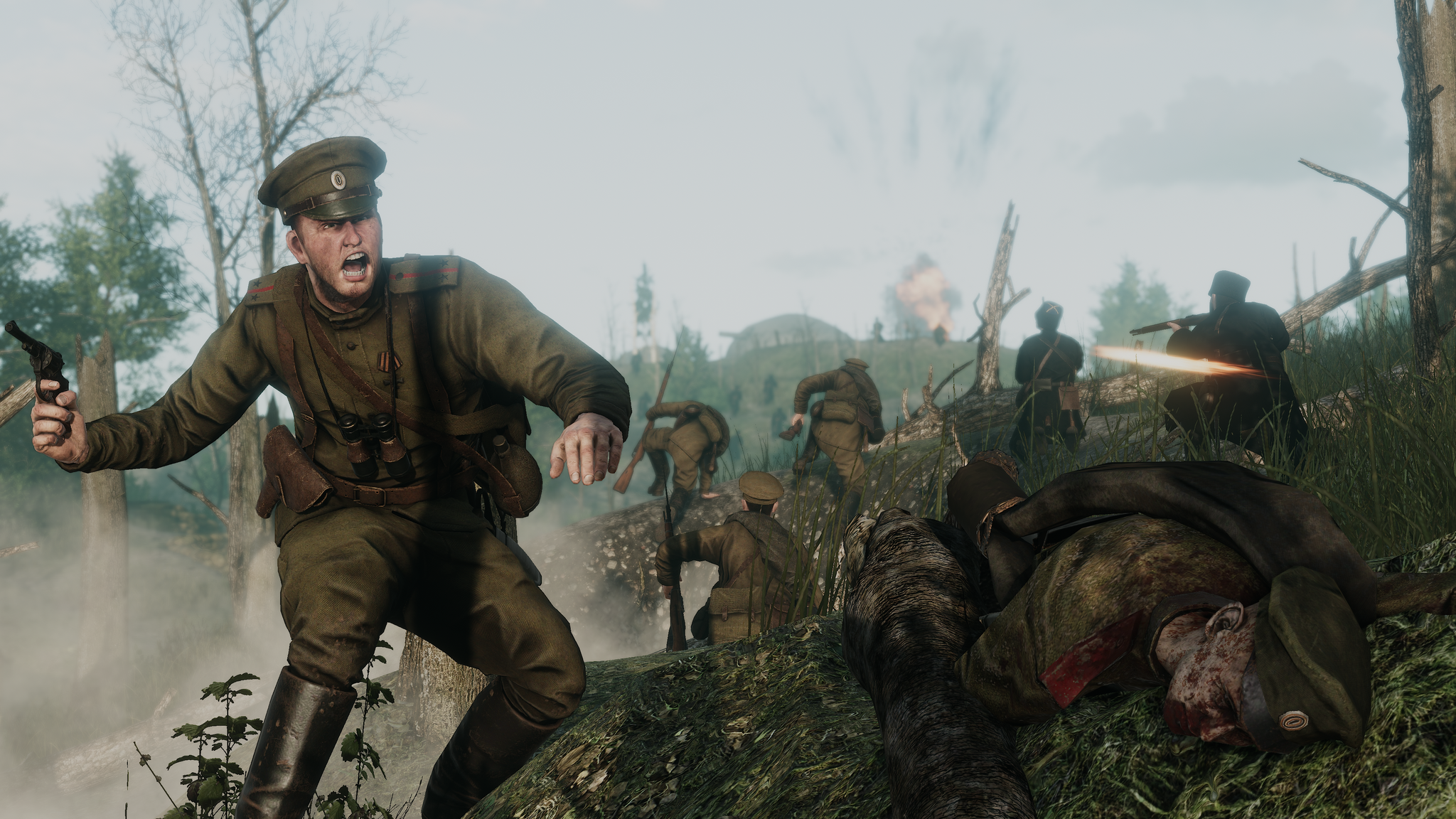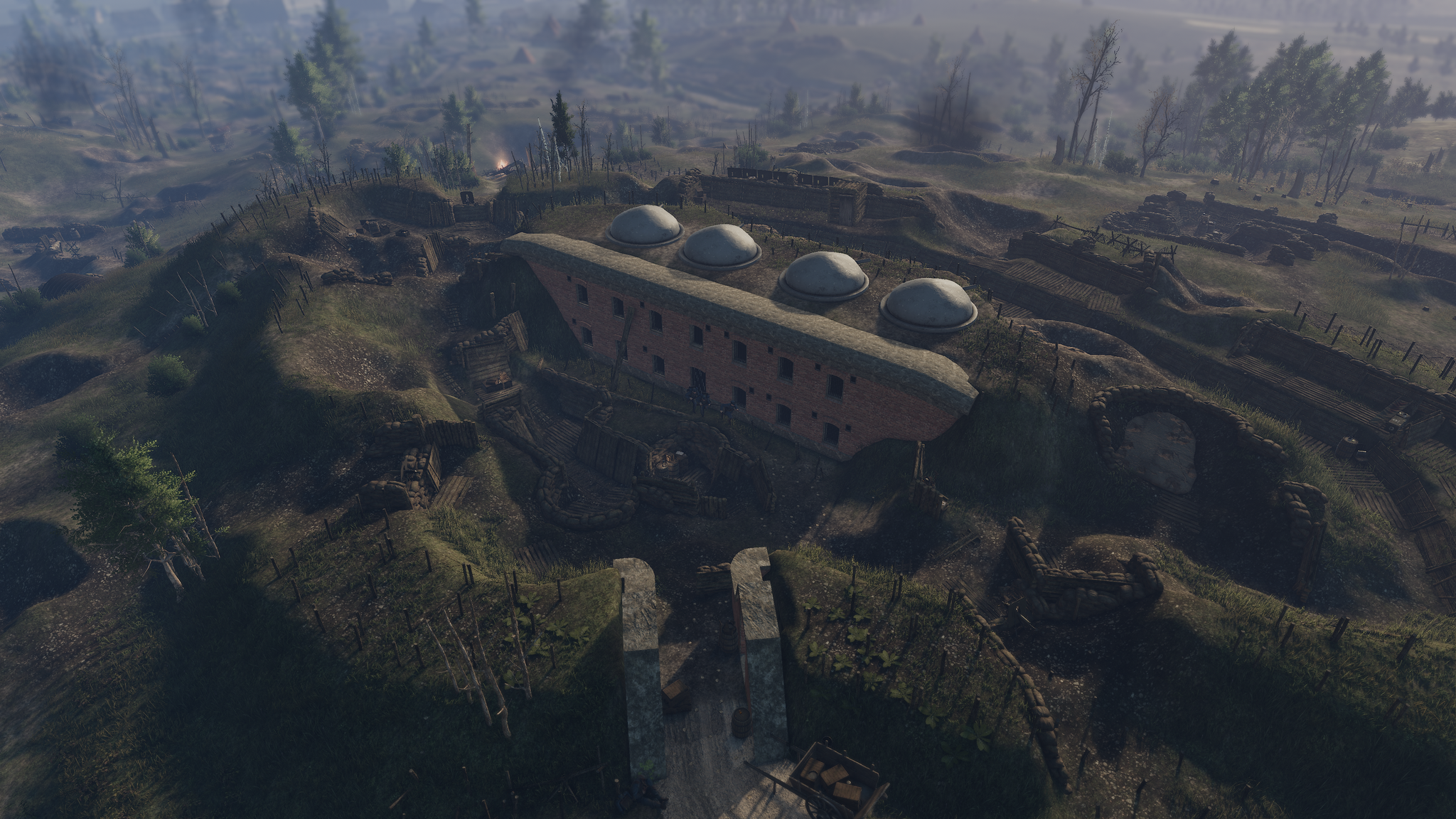FRONTLINE NEWS: An update and war art
[h2]Update[/h2]
The latest Verdun update includes some tweaks to improve soldier movement around sandbags and to prevent unreasonable climbing of the landscape. You're grunts, not acrobats after all! Read the full changelog on the Steam Hub. A few things of particular note:

[h2]Tannenberg released on consoles[/h2]
We are proud to announce the release of Tannenberg on Xbox One and PlayStation 4! This release has been done entirely in-house, like with the Verdun Remaster. The result is looking great, and we can't wait to see what people think. If you know console gamers who might be up for some WW1 action on the Eastern Front, let them know!
[previewyoutube][/previewyoutube]
Along with the console release, a new map based on the fortress of Przemyśl has been added to the Steam version. Austro-Hungarian defenders held out for 133 days before being forced to surrender. Today also sees the console release of Tannenberg!
[h2]Community Artwork[/h2]
You can find all sorts of interesting bits and pieces in the artwork tab here on the Steam Hub. Below are a few of our recent faves!
https://steamcommunity.com/sharedfiles/filedetails/?id=2080092667 This GIF of an Australian gun crew really gives you a sense of how powerful these artillery pieces could be. Thanks to Big_Pek for the upload!
https://steamcommunity.com/sharedfiles/filedetails/?id=1585962268 Storm troopers attack in this piece of artwork uploaded by Augy. Very worth clicking through to see the whole image!
https://steamcommunity.com/sharedfiles/filedetails/?id=1168459076 An amusing clip of Charlie Chaplin uploaded by Troldskog. Verdun in a nutshell indeed!
Do you have some interesting WW1 content to share? Post it on our Steam Hub, or you could come and visit our Discord!

The latest Verdun update includes some tweaks to improve soldier movement around sandbags and to prevent unreasonable climbing of the landscape. You're grunts, not acrobats after all! Read the full changelog on the Steam Hub. A few things of particular note:
- Updated sandbags to have more accurate colliders.
- Improved checks to limit climbing exploits.
- Fix for instant respawning bug.

[h2]Tannenberg released on consoles[/h2]
We are proud to announce the release of Tannenberg on Xbox One and PlayStation 4! This release has been done entirely in-house, like with the Verdun Remaster. The result is looking great, and we can't wait to see what people think. If you know console gamers who might be up for some WW1 action on the Eastern Front, let them know!
[previewyoutube][/previewyoutube]
Along with the console release, a new map based on the fortress of Przemyśl has been added to the Steam version. Austro-Hungarian defenders held out for 133 days before being forced to surrender. Today also sees the console release of Tannenberg!
[h2]Community Artwork[/h2]
You can find all sorts of interesting bits and pieces in the artwork tab here on the Steam Hub. Below are a few of our recent faves!
https://steamcommunity.com/sharedfiles/filedetails/?id=2080092667 This GIF of an Australian gun crew really gives you a sense of how powerful these artillery pieces could be. Thanks to Big_Pek for the upload!
https://steamcommunity.com/sharedfiles/filedetails/?id=1585962268 Storm troopers attack in this piece of artwork uploaded by Augy. Very worth clicking through to see the whole image!
https://steamcommunity.com/sharedfiles/filedetails/?id=1168459076 An amusing clip of Charlie Chaplin uploaded by Troldskog. Verdun in a nutshell indeed!
Do you have some interesting WW1 content to share? Post it on our Steam Hub, or you could come and visit our Discord!











